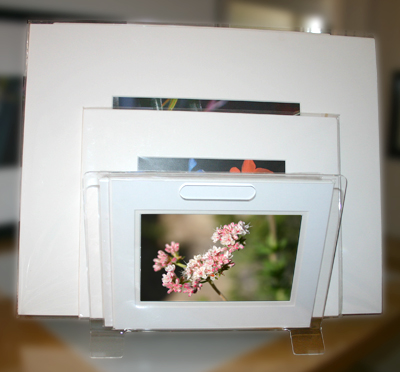 Check out the special offers in our August 2014 WebLetter and learn how to qualify for free shipping on orders placed before August 15, 2014.
Check out the special offers in our August 2014 WebLetter and learn how to qualify for free shipping on orders placed before August 15, 2014.
 Check out the special offers in our August 2014 WebLetter and learn how to qualify for free shipping on orders placed before August 15, 2014.
Check out the special offers in our August 2014 WebLetter and learn how to qualify for free shipping on orders placed before August 15, 2014.
 If it’s Thursday, it must be throwback time.
If it’s Thursday, it must be throwback time.While today, so much of our news is digital, electronic, and fleeting, all the more reason to protect your tangible items like photos, newspapers, cherished greeting cards and other important documents in clear protective bags. We don’t have any minimums on the quantity you order, and that can help you save money, especially on the larger size bags. No matter what size you need, you can order 3, 300 or 3000.
Order your bags today, and don’t forget to take advantage of a variety of ways to save on Oak Creek coupons.
Spring is in the air, at least in some parts of the world and that means time to go through the flat files and drawers where we might find newspaper clippings, photos and other important documents. Performing this ritual, I found an accumulation of documents needing protection before decaying into yellow dust. Luckily, the older documents, like this Los Angeles Times article about Educom ’87, have long been comfortably nestled in clear plastic bags designed especially for protection, preservation and display.
The first time I worked as a consultant to Apple Computer, Inc. was in 1987 when I was one of a 3-person team hired to design and produce a daily print newspaper for the Educom ’87 international conference for higher education. For this purpose, the company Desktop Design was born, and John Grzywacz-Gray, Roger Karraker and I named our team Piece o’ Cake Productions.
Our 5-day mission was to demonstrate Apple’s cutting edge technology to university educators from around the globe by producing a daily “On-the-Spot” newspaper covering the conference. Each morning we delivered a new edition to the conference floor. To our knowledge no one had ever done this before. We were making “desktop” history. For the next three years, our Piece o’ Cake team consulted and worked with Apple, Inc. to introduce new technology to educators.  .
.

Clear acrylic print bin lets browsers focus on prints, not container. The smaller prints shown here are 8x10", doubled matted with foam core back, the medium prints are 11x14", and the large are 16x20".
This clear acrylic print bin is a handy solution for storing, carrying and displaying matted prints. Molded from a single sheet of eighth-inch acrylic with two handles, the 12-inch wide display stands 9.25 inches high on a counter top or table.
The angled arms of this elegant display make it easy for visitors to flip through a dozen or more images without disrupting the viewing area.
The print bin is a no-brainer solution for artists and photographers who want to make a variety of images available for viewing in limited space. When off duty, this multi-purpose container can moonlight in the bathroom or den as a magazine or newspaper rack.
There is nothing better as an artist than to see someone display your work and to know that they love and appreciate it. Whether art is a hobby or you earn a living with it, there are always opportunities to sell your art. If you are struggling with how to go about it, the ideas below can be combined to create your own strategy for marketing your work.
• Artist Cards, Editions and Originals (ACEO) – use as business cards to promote your work. Your original art on the front, your contact & product information on the back.
• Bookmarks – again, use as a business card with your art on one side and your information on the other. Bookmark tassel and sleeve sets can get you started.
• Promotional pieces – T-Shirts, coasters, mugs, etc. – Check out Cafe Press. Wear your art – “mobile marketing” – then hand out an ACEO or bookmark when someone is interested in your art.
• Mail your art
– Use postcards of your art to advertise your work, sell sets of postcards or give as gifts
– Envelope art – advertise as you send out your mail
• Sell prints. These days it is easy. Fine art printing companies are widely available on the Internet and elsewhere. Many of them do digital capture as well as the printing itself.
• Develop a blog or your own online gallery. At a minimum, get a simple web page where people can view your work and contact you – people expect this. Get a free hosted blog at WordPress.com. If you decide you want your own website, check out free web hosting here, then get free blogging software for your website at WordPress.org.
• Sell on eBAY or ETSY – great places to sell your specialty greeting cards or even original art. List your work on eBay to appeal to consumers who don’t have the time or inclination to pay gallery prices. Set a reserve price that assures you’ll get a decent return on your time.
• Art shows – This can be a great way to get your work seen in the local market. Galleries often host these shows, so they do all the advertising. See our recent blog article for information on shows and how to prepare for them. To find shows in your area you can go to festivalnet.com, or Google “craft show index”.
• Set up a booth at your local farmers market, flea market or swap meet to sell your work. This can be fairly inexpensive.
• Ask to have your art displayed at local libraries, restaurants, Barnes & Noble in the café area, etc.
• Sell through an online artist cooperative.
• Network – join museum or artists’ groups and local business community groups.
• Enter competitions.
• Display or sell your work at church & temple bazaars and holiday boutiques, convention centers and community centers.
• Approach companies that will sell your product. Just because you are an individual, don’t assume that companies won’t want your product. Check out Lady Bones.
by Georgia Lange
Last month I paid homage to the prestigious Beverly Hills art show known as the “Affaire in the Gardens”. This art show features over 200 nationwide artists and attracts up to 40,000 spectators every fall and spring since 1973. If you are a fan of outdoor group art shows and fairs, Affaire in the Gardens is top of the line. Even the Andy Gumps are swank at this renowned event.
The Affaire in the Gardens art show is almost too prestigious to be labeled an “art fair”; these individuals are not selling candles and clothing. In researching the exhibition guidelines, I learned that all wearable art and accessories (with the exception of jewelry) is strictly prohibited. Although this particular art show may be out of the traditional art fair league, no one can say that its magnificent display methods cannot be used as a model to other artists for other art shows.
How do these artists prepare for a show such as the Affaire in the Gardens art show; how were the booths set up? How was the necessary equipment acquired? What did each artist offer to promote his or her work? This article is specifically geared towards artists who may want to participate in the Affaire in the Gardens art shows in the future, and how one can prepare for application and participation. However, many of the principles discussed here could be applied to outdoor art shows other than the Beverly Hills art show. It is important to remember that every art show has different guidelines, and it is vital to do the research and examine the requirements before beginning the preparation process. Pay strict attention to deadlines and be at least partially prepared before applying, and remember that what applies to one show may not apply to another.